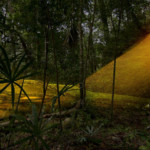Cloudflare Terminates Service To Sci-Hub Domain Names
While Sci-Hub is praised by thousands of researchers and academics around the world, copyright holders are doing everything in their power to wipe the site from the web. From a report: Last weekend another problem appeared for Sci-Hub. This time American Chemical Society (ACS) went after CDN provider Cloudflare, which informed the site that a court order requires the company to disconnect several domain names. "Cloudflare has received the attached court order, Case 1:17-cv-OO726-LMB-JFA, " the company writes. "Cloudflare will terminate your service for the following domains sci-hub.la, sci-hub.tv, and sci-hub.tw by disabling our authoritative DNS in 24 hours." According to Sci-Hub's operator, losing access to Cloudflare is not "critical, " but it may "cause a short pause in website operation." Read more of this story at Slashdot.
Out of nowhere, currency-mining botnet infects 5,000 Android devices
Enlarge (credit: Google ) A fast-moving botnet that appeared over the weekend has already infected thousands of Android devices with potentially destructive malware that mines digital coins on behalf of the unknown attackers, researchers said. The previously unseen malware driving the botnet has worm-like capabilities that allow it to spread with little or no user interaction required, researchers with Chinese security firm Netlab wrote in a blog post published Sunday . Once infected, Android phones and TV boxes scan networks for other devices that have Internet port 5555 open. Port 5555 is normally closed, but a developer tool known as the Android Debug Bridge opens the port to perform a series of diagnostic tests. Netlab's laboratory was scanned by infected devices from 2,750 unique IPs in the first 24 hours the botnet became active, a figure that led researchers to conclude that the malware is extremely fast moving. "Overall, we think there is a new and active worm targeting Android systems' ADB debug interface spreading, and this worm has probably infected more than 5,000 devices in just 24 hours," Netlab researchers wrote. "Those infected devices are actively trying to spread malicious code." Read 4 remaining paragraphs | Comments
Amazon is developing a new ‘Conan the Barbarian’ series
Conan the Barbarian is getting new TV treatment. As part of Amazon's push into the fantasy genre, the company is developing drama series Conan , based on the books by Robert E. Howard. This literary retelling of the classic 1932 tale will see our unlikely hero searching civilisation to find a place and purpose in a world that rejects him as a savage. There are already a host of respected TV names attached to the project, including Ryan Condal from Colony, Miguel Sapochnik from Game of Thrones, and Warren Littlefield from Fargo and The Handmaid's Tale. There's no word yet on when it's likely to hit our screens, nor who will take the role of the iconic character. He's most famously been played by Arnold Schwarzenegger, so whoever it is will have some big furs to fill. Source: Deadline
Solo: A Star Wars Story teaser premieres—and yes, we’re getting a Wookiee
As predicted by many a hopeful Star Wars fan, this year's Super Bowl LII included the world's first look at Solo: A Star Wars Story. The 45-second "teaser" trailer comes packed with just about everything you need to confirm that this is indeed a film about a younger Han Solo: flashes of a Millennium Falcon; an Imperial base that Solo has somehow infiltrated while making promises of becoming "the best pilot in the galaxy"; and brief-but-clear shots of iconic characters such as Lando Calrissian (played by Donald Glover) and a big, might-be-Chewbacca Wookiee. Read 1 remaining paragraphs | Comments
Why Windows Vista Ended Up Being a Mess
alaskana98 shares an article called "What Really Happened with Vista: An Insider's Retrospective." Ben Fathi, formerly a manager of various teams at Microsoft responsible for storage, file systems, high availability/clustering, file level network protocols, distributed file systems, and related technologies and later security, writes: Imagine supporting that same OS for a dozen years or more for a population of billions of customers, millions of companies, thousands of partners, hundreds of scenarios, and dozens of form factors -- and you'll begin to have an inkling of the support and compatibility nightmare. In hindsight, Linux has been more successful in this respect. The open source community and approach to software development is undoubtedly part of the solution. The modular and pluggable architecture of Unix/Linux is also a big architectural improvement in this respect. An organization, sooner or later, ships its org chart as its product; the Windows organization was no different. Open source doesn't have that problem... I personally spent many years explaining to antivirus vendors why we would no longer allow them to "patch" kernel instructions and data structures in memory, why this was a security risk, and why they needed to use approved APIs going forward, that we would no longer support their legacy apps with deep hooks in the Windows kernel -- the same ones that hackers were using to attack consumer systems. Our "friends", the antivirus vendors, turned around and sued us, claiming we were blocking their livelihood and abusing our monopoly power! With friends like that, who needs enemies? I like how the essay ends. "Was it an incredibly complex product with an amazingly huge ecosystem (the largest in the world at that time)? Yup, that it was. Could we have done better? Yup, you bet... Hindsight is 20/20." Read more of this story at Slashdot.
Amateur radio astronomer discovers long-lost satellite
In December 2005, NASA lost contact with the IMAGE satellite. After trying to reconnect for two years, the agency gave up. Over a decade later, hobbyist Scott Tilley was able to confirm that IMAGE is not only still in orbit, but also transmitting data. Tilley stumbled on the find while looking for another satellite named Zuma. Via the Washington Post : When Tilley caught a signal after a week of searching, on Jan. 20, he almost ignored it. Whatever it was, it was orbiting much higher than Zuma was supposed to be. There are hundreds of active satellites in space, most of which didn't interest him. “I didn't think of it much more,” he wrote on his blog. But as he continued to scan for Zuma, he came across the signal again — stronger this time — and out of curiosity checked it against a standard catalogue. The signal matched for IMAGE. But IMAGE was supposed to be dead. Tilley had to Google the old satellite to find out what it was, as it had been all but forgotten on Earth. Eventually, he came across a decade-old NASA report on the mission's failure. “Once I read through the failure report and all the geeky language the engineers use, I immediately understood what had happened,” Tilley told Canadian Broadcasting Corp. News. Then he rushed to contact NASA himself. • NASA's IMAGE RECOVERY
Tesla To Construct ‘Virtual Solar Power Plant’ Using 50,000 Homes
Long-time Slashdot readers denbesten, haruchai, and Kant all submitted this story. CleanTechnica reports: Tesla and the government of South Australia have announced a stunning new project that could change how electricity is generated not only in Australia but in every country in the world. They plan to install rooftop solar system on 50, 000 homes in the next four years and link them them together with grid storage facilities to create the largest virtual solar power plant in history. And here's the kicker: The rooftop solar systems will be free. The cost of the project will be recouped over time by selling the electricity generated to those who consume it. "We will use people's homes as a way to generate energy for the South Australian grid, with participating households benefiting with significant savings in their energy bills, " says South Australia's premier Jay Weatherill. "More renewable energy means cheaper power for all South Australians..." Price predicts utility bills for participating households will be slashed by 30%. Electrek reports that the project will result in at least 650 MWh of additional energy storage capacity, and Tesla points out that "At key moments, the virtual power plant could provide as much capacity as a large gas turbine or coal power plant." Read more of this story at Slashdot.
Netflix’s ‘Cloverfield’ sequel starts streaming tonight
Last year Netflix's Super Bowl ad focused on a season of Stranger Things we still had months to wait for, but this year things are different. The streaming company dropped a surprise 30-second teaser for The Cloverfield Paradox , a sequel to the 2008 monster movie that will be available for viewing worldwide tonight, after the game. As Deadline notes, the Paramount/J.J. Abrams flick had been planned for a theatrical release this weekend, but reports that dealing with Netflix made the movie "immediately profitable." Also, on Twitter Netflix revealed a promotional deal that will send snacks directly to viewers in New York, San Francisco, LA and Chicago, in time for the movie's debut after the game. Netflix: In the near future, a group of international astronauts on a space station are working to solve a massive energy crisis on Earth. The experimental technology aboard the station has an unexpected result, leaving the team isolated and fighting for their survival. Developing... NY, SF, LA, Chicago: since we're doing surprises tonight, tweet back with #CloverfieldParadox
Japan Launches the World’s Smallest Satellite-Carrying Rocket
Japan has launched the world's smallest satellite-carrying rocket. Long-time Slashdot reader hey! writes: Last week Japan Aerospace Exploration Agency (JAXA) successfully placed a three-kilogram cubesat into an 180 x 1, 500 kilometer orbit at 31 degrees inclination to the equator. The payload was launched on a modified sounding rocket, called the SS-520-5. The assembled rocket weighed a mere 2600 kilograms [2.87 tons] on the launchpad, making the SS-520-5 the smallest vehicle ever to put an object into orbit. Note that the difference in the SS-520's modest orbital capacity of four kilograms and its ability to launch 140 kilograms to 1000 kilometers on a suborbital flight. That shows how much more difficult it is to put an object into orbit than it is to merely send it into space. Read more of this story at Slashdot.
LiDAR reveals Mayan mega city hidden in Guatemalan jungle
A vast Mayan megalopolis apparently lies hidden underneath all the trees, creepers and centuries of growth and soil in the Guatemalan forest -- and we might never have found it if not for the wonders of laser technology. The PACUNAM Foundation , which champions the use of scientific research to preserve cultural heritage, has scanned the jungles in the country using Light Detection and Ranging ( LiDAR ) technology and found an interconnected network of ancient cities. They discovered 60, 000 previously unknown structures without having to cut down a single plant, and that discovery changes many things we thought we knew about the ancient civilization. The sheer size of the megalopolis suggests that Mayan populations were bigger than we thought. Previous estimates put the Mayan people's population at around 5 million, but now it's possible that there were 10 to 15 million of them. The fact that the team discovered houses, pyramids, palaces and elevated highways even though Mayans didn't use wheels or relied on beasts on burden indicates that they had an organized workforce. Since the cities in the hidden megalopolis were connected by wide causeways, the Mayans likely interacted regularly and might've had established trade routes. Further, all the ramparts and fortresses found in the ruins show that "warfare, " as team member and archaeologist Thomas Garrison explained, "wasn't only happening toward the end of the civilization." While we mostly talk about LiDAR as a system that helps self-driving cars and robots "see" their environments, scientists have also been using it to survey the environment without disturbing it. That's why it's the perfect tool for PACUNAM's scientists -- aside from the fact that physically looking for the ruins would've taken forever, Guatemala is already losing 10 percent of its forests every year to agriculture and human settlement. In fact, we'll probably hear more discoveries in the future, since this is only the initiative's first phase: the organization plans to use LiDAR to map over 5, 000 square miles of Guatemala's lowlands in the future. Via: The Guardian Source: National Geographic









